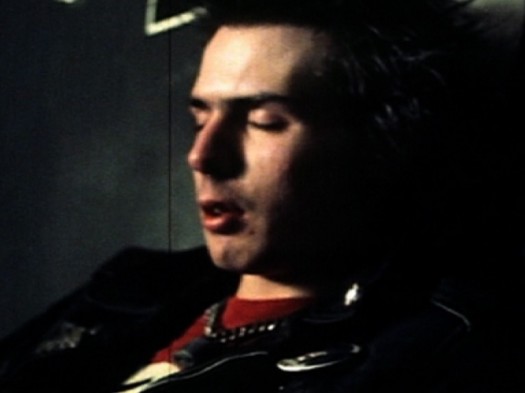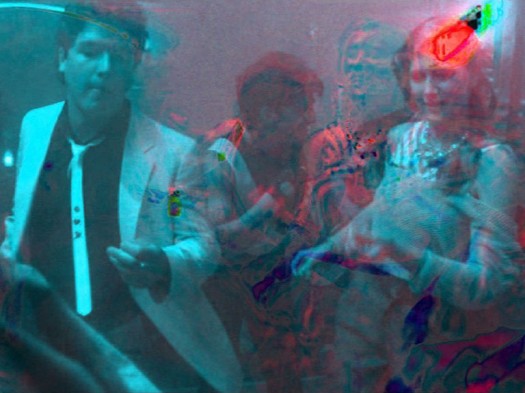The Beginning of the End

Beaconsfield, London →
24 Nov 2010 – 27 Feb 2011
bibliography:
Naomi Siderfin, ‘Mark Dean: The Beginning of The End?’, catalogue essay, 2010
Rachel Withers, ‘Mark Dean’, Artforum, April 2011
Eliza Williams, ‘Mark Dean’, Art Monthly no 343, February 2011
Helen Sumpter, ‘Mark Dean’, Time Out no 2108, January 13-19 2011
Paul Bayley, interview with Mark Dean, Art & Christianity Journal, No 67, Autumn 2011
Jaguar Shoes Collective →
Inscape →
Margaret Garlake (ed), ‘Beaconsfield: Chronic Epoch’, Black Dog Publishing, London, 2015, ISBN: 9781908966575
exhibited works:




Retrospective Jukebox (1992-2010)
including:
01 Love Love Love
02 Nothing To Fear (The American Friend +-12)
03 Nothing To Worry About (Easy Rider/Frenzy -3)
04 What Kind Of Fear? (Alice in den Stadten x 4)
05 Go Together (The Wild One x 2 – 17)
06 I Didn’t Invent It (Lilith – Beatty x 16 + 1/2)
07 Goin’ Back (The Birds/The Byrds x 32 + 1)
08 Jane/Fonda (Barbarella/Klute)
09 Scorpio Rising 2 (The Gospel according to Matthew/Hells Angels on Wheels)
10 Picture In Picture (TyhaerPGincatiurroeDoffoDeorruitacniGPreahyT)
11 Untitled (Grace)
12 Untitled (My Way Home + -, resting pulse)
13 I Can’t See (Vertigo)
14 Ascension (nothing/Something Good)
15 Universal (Turing Machine)
16 No. Turing (FRS.jpg/0-9.psd)
17 Untitled (Inverted Frenzy)
18 Untitled (Twisted Motorcycle Gang)
19 When I Was A Child…
20 Greta Garbo (1905-1990)
21 The Return of Jackie & Judy (+ Joey)
22 Teenager (Moondogs)
23 Insert Coin (Nico)
24 Man(Son)
25 Police & Thieves (Version)
26 Crimson & Clover (Version)
27 Ten Years x 7 (5 x 50% … 400 x 4000%)
28 Bad Brain (Sire)
29 The Band (Vox)
30 Masochistic Opposite (Intro)
31 Justice Not Vengeance (Outro)
32 Darker Block (1 Thess 5:1-11)
33 Ur-philosophy (combining form)
34 Unorthodox (W/E)
35 How Can You Mend A Broken Heart (1 Cor. 11.23-26)
36 Carrie (On)
gallery information:
Having spent the 80’s in a post-punk wilderness, Mark Dean was catapulted into the eye of the art world in the early 90’s with his first video work Love Love Love. This piece set the pace for a body of distinctive work that was characterised by the use of appropriated clips – images often lacerated from feature films and sound re-mixed from pop music – and which focussed on the most fundamental aspects of the human condition. In recent years the emphasis on appropriated imagery has given way to the artist also taking up position behind the camera. Running across the Beaconsfield site in all three exhibition spaces, this current “Phase” exhibition, The Beginning of the End, offers a pause for mid-career reflection upon all aspects of the journey within Mark Dean’s oeuvre.
The installation Love Missile (7″ vs 12″), 2010, in Upper Gallery 1, is based on two versions of Sigue Sigue Sputnik’s electro-punk debut single, played simultaneously from opposite speakers. As the two vinyl recordings loop, they move in and out of synch, accompanied by two superimposed video images of a figure at dusk – one looping for the duration of the 7” disc, the other synched to the 12”. The projected golden light on the water surrounding the ambiguous figure contrasts with the cold cathode light emanating from two video monitors, one showing a 7” picture disc, the other a 12” (rotating at 7 and 12 second intervals respectively.) The images on these discs are a series of cruise missiles being fired from ships, each tilted so that the missile is directed straight upwards, in accordance with the instruction of the lyrics: “US bombs cruising overhead… there goes my love, rocket-red… multi-millions still unfed… shoot it up….” The redirection of these weapons (which theoretically means they would never hit their targets) requires a total realignment of the rest of the world; a new horizon is registered by a white line crossing the vertical missiles.
In Arch Gallery 3, Christian Disco (Terminator), 2010 takes a three second clip from the Terminator’s point-of-view shot of the dance floor, progressively time-shifting this loop, and superimposing the results whilst cycling through the colour spectrum. The resulting video image is synced to the music from the end credits of the original movie, which is in turn accompanied by two looped audio recordings (“Here ends the first/second lesson”) taken from the ends of Bible readings at Wells Cathedral on Holocaust Memorial Day.
These complementary, large-scale works are informed by two foyer works: Open Your Eyes (Syd/Vicious), 2010 montages a slowed down edit of Syd Barrett’s song ‘Two of a Kind’ with an almost imperceptibly moving documentary film of Sex Pistol Sid Vicious, apparently in a liminal space between life and death. The theme of flawed mortality is picked up in the audio piece The Men Who Fell to Earth, 2010, at the entrance to the exhibition which simultaneously loops two instances of the same music from Nicolas Roeg’s sci- fi classic, taken from earlier and later sections of the film’s narrative.
Visitors can view the range of Mark Dean’s art works made over the past twenty years, through personal selection (Retrospective Jukebox, 1992-2010, Canteen Gallery 2). The archive includes the works Dean made for a number of Beaconsfield projects including Experimental Religion, 2008, Crimson & Clover (Version), Rag Doll (Version) and Police & Thieves (Version), all 2005 and Picture In Picture (TyhaerPGincatiurroeDoffoDeorruitacniGPreahyT), 1997.
Mark Dean received a Paul Hamlyn Award for Artists in 2009, and in July 2010 was ordained in the Church of England. He states: ‘I am interested in the relation of contemporary art and religion, but do not recognise any shared language with which to discuss this – at least, not at the level that either discipline requires. I might be wrong, of course. In any case, my work is driven by this question.’
This is the second in the Beaconsfield series Phase, which turns the spotlight on mid-career artists with whom the organisation has a significant relationship.
